The AMD Ryzen 3 1300X and Ryzen 3 1200 CPU Review: Zen on a Budget
by Ian Cutress on July 27, 2017 9:30 AM EST- Posted in
- CPUs
- AMD
- Zen
- Ryzen
- Ryzen 3
- Ryzen 3 1300X
- Ryzen 3 1200
Benchmarking Performance: CPU Legacy Tests
Our legacy tests represent benchmarks that were once at the height of their time. Some of these are industry standard synthetics, and we have data going back over 10 years. All of the data here has been rerun on Windows 10, and we plan to go back several generations of components to see how performance has evolved.
All of our benchmark results can also be found in our benchmark engine, Bench.
3D Particle Movement v1
3DPM is a self-penned benchmark, taking basic 3D movement algorithms used in Brownian Motion simulations and testing them for speed. High floating point performance, MHz and IPC wins in the single thread version, whereas the multithread version has to handle the threads and loves more cores. This is the original version, written in the style of a typical non-computer science student coding up an algorithm for their theoretical problem, and comes without any non-obvious optimizations not already performed by the compiler, such as false sharing.
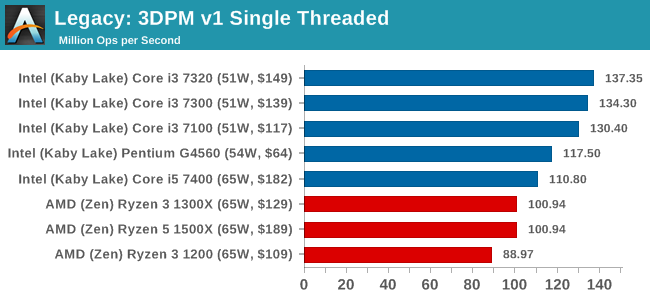
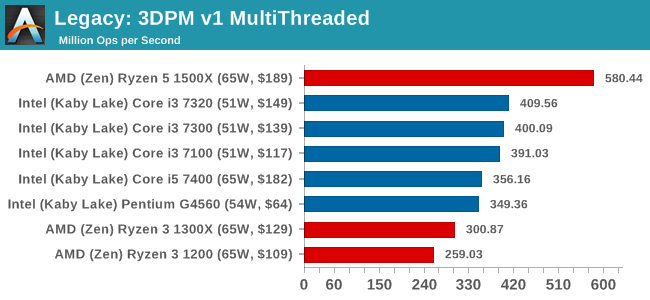
CineBench 11.5 and 10
Cinebench is a widely known benchmarking tool for measuring performance relative to MAXON's animation software Cinema 4D. Cinebench has been optimized over a decade and focuses on purely CPU horsepower, meaning if there is a discrepancy in pure throughput characteristics, Cinebench is likely to show that discrepancy. Arguably other software doesn't make use of all the tools available, so the real world relevance might purely be academic, but given our large database of data for Cinebench it seems difficult to ignore a small five-minute test. We run the modern version 15 in this test, as well as the older 11.5 and 10 due to our back data.

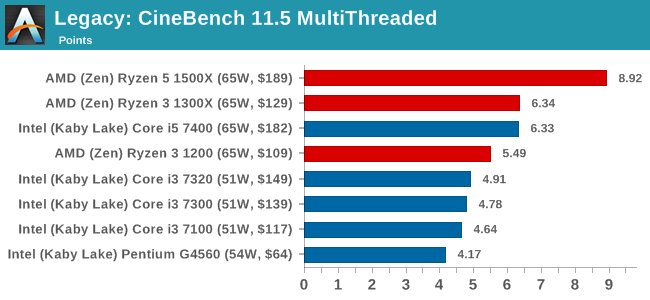
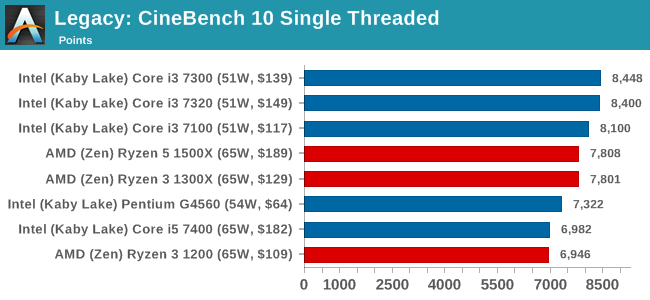
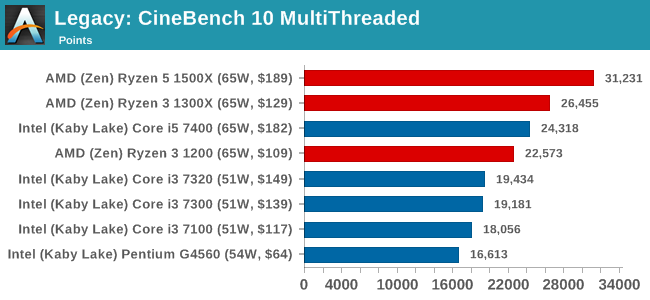
x264 HD 3.0
Similarly, the x264 HD 3.0 package we use here is also kept for historic regressional data. The latest version is 5.0.1, and encodes a 1080p video clip into a high-quality x264 file. Version 3.0 only performs the same test on a 720p file, and in most circumstances the software performance hits its limit on high-end processors, but still works well for mainstream and low-end. Also, this version only takes a few minutes, whereas the latest can take over 90 minutes to run.
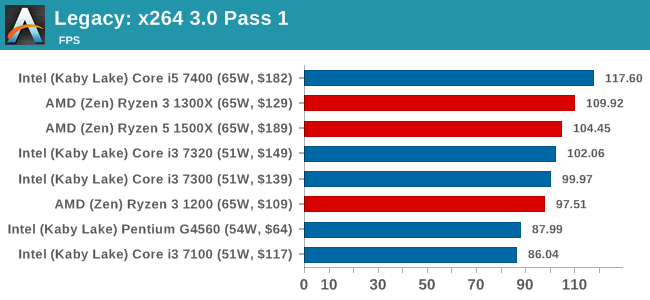
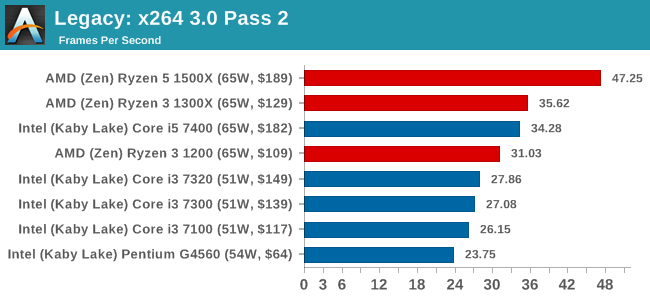










140 Comments
View All Comments
dave_the_nerd - Thursday, July 27, 2017 - link
Yes, obviously. That would be terrible.Oxford Guy - Thursday, July 27, 2017 - link
I'm glad you're not a tech reviewer. You could just say "Obviously" for every technical detail and that would be your article.Gothmoth - Thursday, July 27, 2017 - link
you can overclock the cheap AMD cpus... what about the intels?i am to lazy to check but are the testets intels k models? i guess not.
ddhelmet - Friday, July 28, 2017 - link
One thing I am really curious about is Citra performance. It would be an important test for single thread performance. All about that IPC.serendip - Friday, July 28, 2017 - link
Sorry but I don't see the point of these chips. An i3 is supposed to be a cheap do-everything CPU for basic business and school PCs. The Ryzen 3 not having a GPU really hurts its chances in those segments and it probably won't get picked up by OEMs. AMD needs mass market sales right now and Ryzen APUs can't come soon enough.I'm also wondering if yields are good enough that Ryzen 7s are the main chips being produced, with few 5s and 3s left over from the 7s that didn't meet spec.
Outlander_04 - Saturday, July 29, 2017 - link
The core count of the Ryzen chips is going to be a significant advantage over any dual core .Adding a basic graphics card will cost about $30 . For that you free up system RAM that the onboard would otherwise be using, and you get decent drivers that let you make some adjustments that intel removed when they dumbed down their drivers a few years back
serendip - Saturday, July 29, 2017 - link
Yeah but most office tasks run fine on 2 cores. Most users probably won't even notice they're using quad core processor.That $30 extra is a lot when it comes to speccing thousands of machines. A cheap discrete GPU is also another potential point of failure that large enterprises might not want on a big rollout. I understand the enthusiast reasoning for a cheap but powerful CPU like the Ryzen 3 paired with a decent midrange card, but this setup doesn't make sense for large corporate orders. AMD needs to sell lots of chips to large clients to survive.
Outlander_04 - Saturday, July 29, 2017 - link
It's not just the "Office tasks". Its the network services, antivirus and updating that goes on in what should be the background, but is not when you have a dual-core. I speak from experience. The HP desktops we have at work can be frustrating.buxe2quec - Friday, July 28, 2017 - link
Posting a review with placeholders for the benchmarks is definitely not professional.Delay it two days and post it in full, or split it in two reviews.
Looks like clickbaiting...
supdawgwtfd - Friday, July 28, 2017 - link
Ian. Your a shill. Or you just completely biased.Every single other review i have read has said the Ryzen 3 it the better option. In price and performance.
WTF has happened to Anandtech? Why are you guys spewing BS? Why can't you be unbiased?
Seriously?
Have been reading the site for almost 20 years. I think i will now have to officially NOT come here again...